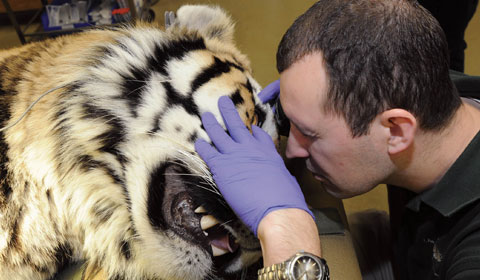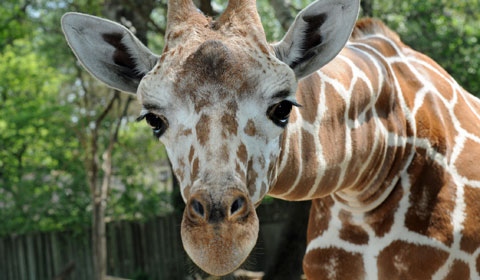News Release
Contact information
Murray Devine, Charles & Margery Barancik Foundation, mdevine@barancikfoundation.org, 941.223.4296
Sondra Katzen, Chicago Zoological Society, sondra.katzen@czs.org, 708.688.8351
FOR IMMEDIATE RELEASE
April 9, 2021
Chicago Zoological Society’s Sarasota Dolphin Research Program
Monitoring Piney Point Effects
Sarasota, Fla. — As eyes across the nation follow the environmental crisis at Piney Point, ecological groups have raised alarms on the impact the pumping of wastewater will have on Tampa Bay and its natural inhabitants.
As a collaborative effort with the National Oceanic and Atmospheric Administration (NOAA) and other organizations, this week, staff from the Chicago Zoological Society’s Sarasota Dolphin Research Program (SDRP) has begun monitoring the dolphins in the area surrounding the gypsum stack spill.
The SDRP is a leading dolphin research organization and has maintained the world’s longest longitudinal study of dolphins in the wild. Through research measures like dolphin surveys and seasonal dolphin prey fish monitoring, the SDRP helps scientists learn about dolphin biology, environmental impacts on their health and reproductive success, their social structure, and the effects of human activities. Applying some of the approaches the team uses with Sarasota Bay’s dolphins to the emerging situation in Tampa Bay, will help with understanding the effects the spill has had on local wildlife. The SDRP is trying to identify:
which dolphins are being exposed to the highest concentrations of discharged waters (many are individually identifiable); how dolphin distributions may have changed in response to the discharges; whether dolphins are having respiratory issues, exhibiting abnormal behavior or developing unusual skin conditions; and if dolphins have left the area, where they went.
”We conducted photo-identification research in the area near Port Manatee during 1988-1993, and identified a resident dolphin community adjoining that of Sarasota Bay. Since the discharge began, we have seen many fewer dolphins in the area than we did in our earlier surveys, and they are mostly more than two miles from the discharge site. These findings are preliminary, and the situation is changing daily,” said Randall Wells, director of the SDRP.
The scope of the work remains to be fully defined, temporally and geographically, and depends on how the spill develops. For now, no government funds have been available to cover program expenses. Charles & Margery Barancik Foundation has diverted existing funding to the organization to aid the Tampa Bay efforts and is rallying other donors to make donations.
“Dolphins have been long considered our water-based ecological sentinels—breathing the same air, swimming in the same waters, and eating the same fish we do,” says Teri A Hansen, President|CEO of Barancik Foundation. “If we can identify what effects this crisis has on them, we can better understand what risks it poses for our own health and hope others lend their philanthropic support to this important work.”
In addition to providing essential baseline data for both the conservation of dolphins in the wild and their welfare in zoos, the SDRP will continue to contribute to management actions that help mitigate negative influences humans can have on our marine ecosystems.
# # #
Photo Captions (credit SDRP/Chicago Zoological Society)
Port Manatee: Port Manatee is where the contaminated water from the reservoir is being discharged.
S9110: Most dolphin sightings are several miles away from Port Manatee, which is located in the southeastern portion of Tampa Bay. (
Photos taken under NMFS Scientific Research Permit No. 20455)
About the Chicago Zoological Society’s Sarasota Dolphin Research Program
The SDRP has been operated by the Chicago Zoological Society (CZS) since 1989. Dolphin Biology Research Institute, a Sarasota-based 501(c)3 nonprofit corporation was established in 1982 to provide logistical support through its fleet of small research vessels, vehicles, computers, cameras, field equipment, etc. Since 1992, the program has been based at Mote Marine Laboratory, with office, lab, storage and dock space within the resident Sarasota Bay dolphins’ home range. The SDRP maintains academic connections including providing graduate student opportunities primarily through the University of Florida, the University of California at Santa Cruz, and Duke University. The Sarasota Dolphin Research Program is one of CZS’s flagship programs in its
Center for Conservation Leadership. Learn more at
https://sarasotadolphin.org/
About Charles & Margery Barancik Foundation
The Charles and Margery Barancik family has long believed in the power of philanthropy to shape our world and enrich the lives of all people. It was the expression of this belief that led them in 2014 to establish Charles & Margery Barancik Foundation—a private, family foundation located in Sarasota, Florida. Barancik Foundation creates initiatives and awards grants in Sarasota and beyond in the areas of education, humanitarian causes, arts and culture, the environment, and medical research. For more information, visit
www.barancikfoundation.org.
MEDIA CONTACT:
Sondra Katzen
Media Relations Manager
Office: 708-688-8351
Cell Phone: 708-903-2071
E-mail: Sondra.Katzen@CZS.org

Read about our innovative practices in animal welfare to ensure the ultimate care of our individual animals.

Create extraordinary connections with animals and nature!

Become our partner in caring for animals and in connecting people with wildlife and nature.